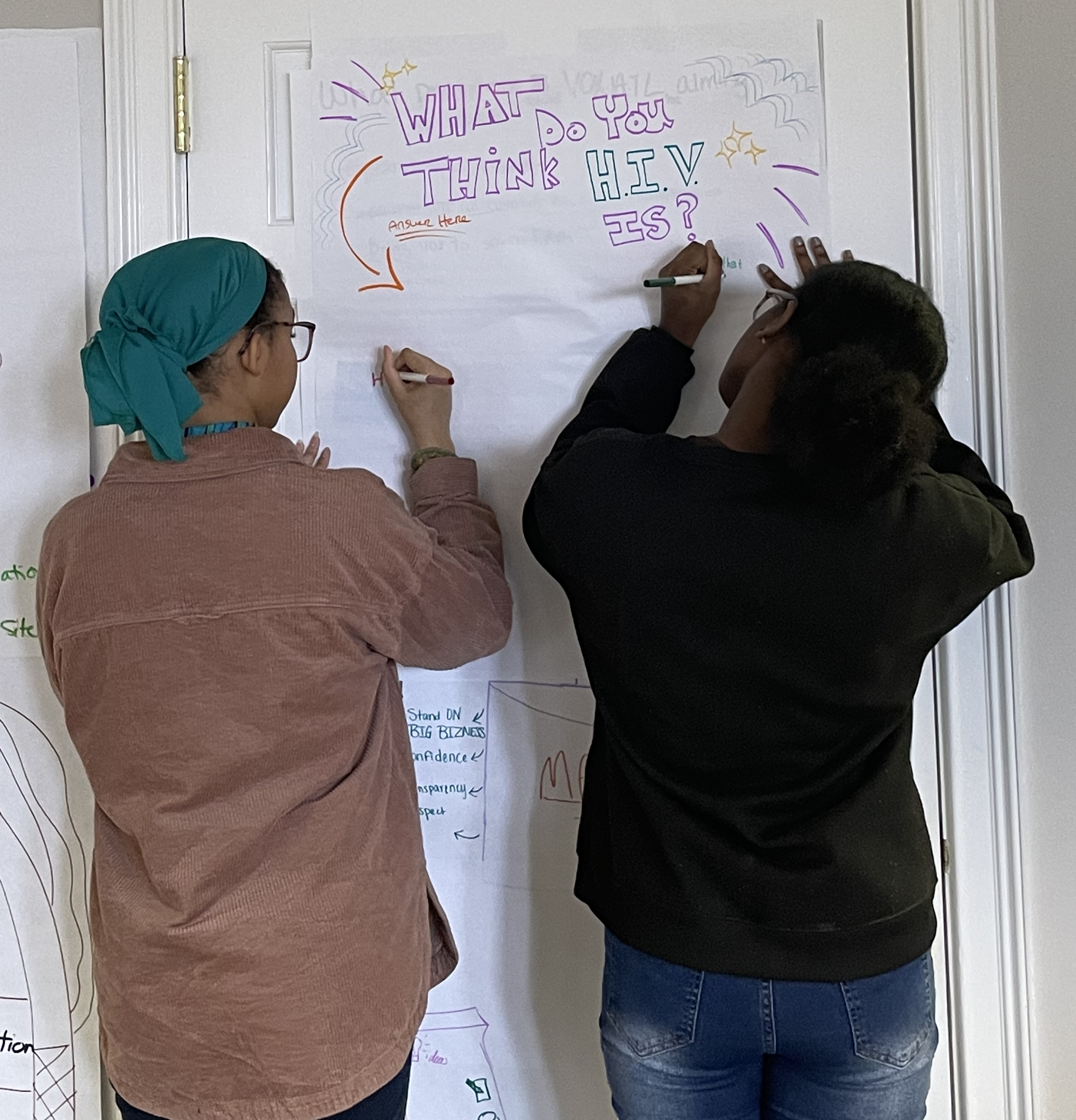Robyn, Jada, Anike and Bailey gathered at VOX ATL to learn a little about HIV with the help of Habeebah Yasin, office & admin coordinator the Feminist Women’s Health Center, and peer health educator and VOX ATL alumn Zariyah Allen. Listen in on their conversation, and here are some myths they’re busting.
First and foremost, what is HIV anyway?
HIV stands for human immunodeficiency virus, a virus that attacks the body’s immune system.
What myths about HIV have you already heard?
Myth: One myth about HIV that I’ve heard is that only gay men are impacted by HIV.
Fact: HIV affects everyone. The Centers for Disease Control and Prevention (CDC) reports that more than half (58%) of estimated HIV infections in 2021 were among young people ages 13-34. And it affects more people in the US South than in other parts of the country, according to data from Emory University’s Rollins School of Public Health.
Myth: People think you can get HIV from basic contact, like toilet paper or toilet seats.
Fact: That’s just not true. According to the CDC, the most common transmission of HIV is through unprotected sex and sharing needles, syringes, or other drug injection equipment. HIV can be spread from a mother to her baby during pregnancy, birth, or breastfeeding. You cannot get HIV from donating blood, since U.S. blood collection procedures are highly regulated. And you cannot get HIV from saliva.
Myth: HIV is considered a death sentence, like, as soon as you get it, it’s extremely deadly.
Fact: There is currently no cure for HIV (if you get infected you have it for life). But there are ways to treat HIV to live with and control it. There are two types of HIV treatment: pills and shots.
If not treated, HIV can lead to AIDS (acquired immunodeficiency syndrome), a term commonly mistaken for and used interchangeably with HIV. People with AIDS have badly damaged immune systems and can get severe illnesses, called opportunistic infections. When people who have AIDS get sick, they can get really sick.
So, what is the importance of taking this myth busting into the real world, and what are some ways that you can do that outside of a podcast?
I think it’s important because it really tears down the barriers. And it makes people want to learn more about HIV. I know it’s a touchy subject. Before our informative session [with Feminist Women’s Health Center and Healthy Love peer educator] I didn’t know what HIV was. All I knew was that it was dangerous, and it was a “disease,” but now I know that it’s labeled as a [viral] infection. It’s not [spread] just [through] sex, it’s like, bodily fluids [but not saliva]. I think people need to be made more aware about how many ways they can get HIV, because a virgin could have HIV, right?
It just breaks down things that people, that society views as normal, because all the things that we’ve been putting out up until now about HIV, it’s not, it’s not necessarily true, or if it is true, then it’s been like, exaggerated to an extent where it’s just, terrifying. So having this taken out into the community just provides more information and gets rid of some of the stereotypes or the stigma around HIV and makes people safer.
Listen on Soundcloud:
Resources & Sources:
- For more info about HIV today visit cdc.gov/hiv/library/awareness/nyhaad.html.
- For free testing or info about testing visit:
- Sources: SisterLove, Emory Health Digest and AIDSVu, presented by Emory University’s Rollins School of Public Health in partnership with Gilead Sciences, Inc. and the Center for AIDS Research at Emory University (CFAR).
Editor’s note: This content is supported by Counter Narrative Project.




